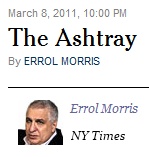Part 3 of 5 (See also Part 1 and Part 2) begins as follows…
"Incommensurable. It is a strange word. I wondered, why did Kuhn choose it? What was the attraction?
Here’s one clue. At the very end of 'The Road Since Structure,' a compendium of essays on Kuhn’s work, there is an interview with three Greek philosophers of science, Aristides Baltas, Kostas Gavroglu and Vassiliki Kindi. Kuhn provides a brief account of the historical origins of his idea. Here is the relevant segment of the interview.
T. KUHN: Look, 'incommensurability' is easy.
V. KINDI: You mean in mathematics?
T. KUHN: …When I was a bright high school mathematician and beginning to learn Calculus, somebody gave me—or maybe I asked for it because I’d heard about it—there was sort of a big two-volume Calculus book by, I can’t remember whom. And then I never really read it. I read the early parts of it. And early on it gives the proof of the irrationality of the square root of 2. And I thought it was beautiful. That was terribly exciting, and I learned what incommensurability was then and there. So, it was all ready for me, I mean, it was a metaphor but it got at nicely what I was after. So, that’s where I got it.
'It was all ready for me.' I thought, 'Wow.' The language was suggestive. I imagined √2 provocatively dressed, its lips rouged. But there was an unexpected surprise. The idea didn’t come from the physical sciences or philosophy or linguistics, but from mathematics ."
A footnote from Morris (no. 29)—
"Those who are familiar with the proof [of irrationality] certainly don’t want me to explain it here; likewise, those who are unfamiliar with it don’t want me to explain it here, either. There are many simple proofs in many histories of mathematics — E.T. Bell, Sir Thomas Heath, Morris Kline, etc., etc. Barry Mazur offers a proof in his book, 'Imagining Numbers (particularly the square root of minus fifteen),' New York, NY: Farrar, Straus and Giroux. 2003, 26ff. And there are two proofs in his essay, 'How Did Theaetetus Prove His Theorem?', available on Mazur’s Harvard Web site."
There may, actually, be a few who do want the proof. They may consult the sources Morris gives, or the excellent description by G.H. Hardy in A Mathematician's Apology , or, perhaps best of all for present purposes, the proof as described in a "sort of a big two-volume Calculus book" (perhaps the one Kuhn mentioned)… See page 6 and page 7 of Volume One of Richard Courant's classic Differential and Integral Calculus (second edition, 1937, reprinted many times through 1970, and again in a Wiley Classics Library Edition in 1988).
